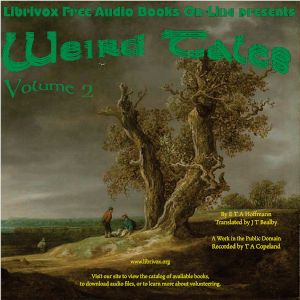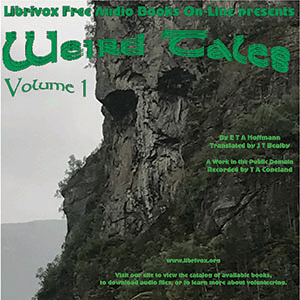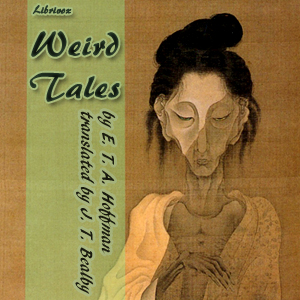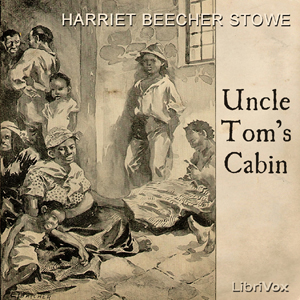Weird Tales, Volume 2 - E. T. A. Hoffmann
E. T. A. Hoffmann
Audiobook info
Comments (0)

listen
Paradoxically, it is variety that unites the tales you are about to read. They take place in widely separated countries and historical periods, and their outcomes—fortunate or tragic—cannot always be predicted with accuracy. The characters too speak with varied voices; even the narrative voice is not uniform, for the author often frames story within a story, using a character in one tale to narrate another.
The reader will sometimes feel as though the author is extending an invitation to enter his workshop to observe him at his trade and admire his craftsmanship. Narrative techniques, for instance, such as suspending the detailed account of events in order to summarize what follows or occasionally interrupting the story line to offer a bit of background or exposition, are introduced by referring to “the indulgent reader,” “my kindly reader,” or even (once) a direct address: “dear reader.” This device is common to much Romantic literature, but Hoffmann’s self-conscious use of it renders it satirical.
He frequently shifts from seriousness to mockery, characterized by an arch tone as he knowingly overworks Romantic clichés like apostrophes to absent or non-sentient entities and especially hyperbole, which he mercilessly burlesques. Yet his mercurial sensibility can then shift in a moment back into the serious use of Romantic conventions: overwrought descriptions, pathetic fallacies, sudden reversals of fortune, unlikely coincidences, gloomy intimations of the cruelty of destiny, dark secrets, and men fulsomely unburdening themselves of their inmost feelings, not without tears. He even takes up the age-old theme of friendship vs. romantic love and their rival claims to be the nobler sentiment. In short, although clearly an early Romantic himself, Hoffmann nevertheless shares Jane Austen’s rational criticism of the Romantic temperament, “sentimental” being a term of reproach in this volume. - Summary by Thomas Copeland
The reader will sometimes feel as though the author is extending an invitation to enter his workshop to observe him at his trade and admire his craftsmanship. Narrative techniques, for instance, such as suspending the detailed account of events in order to summarize what follows or occasionally interrupting the story line to offer a bit of background or exposition, are introduced by referring to “the indulgent reader,” “my kindly reader,” or even (once) a direct address: “dear reader.” This device is common to much Romantic literature, but Hoffmann’s self-conscious use of it renders it satirical.
He frequently shifts from seriousness to mockery, characterized by an arch tone as he knowingly overworks Romantic clichés like apostrophes to absent or non-sentient entities and especially hyperbole, which he mercilessly burlesques. Yet his mercurial sensibility can then shift in a moment back into the serious use of Romantic conventions: overwrought descriptions, pathetic fallacies, sudden reversals of fortune, unlikely coincidences, gloomy intimations of the cruelty of destiny, dark secrets, and men fulsomely unburdening themselves of their inmost feelings, not without tears. He even takes up the age-old theme of friendship vs. romantic love and their rival claims to be the nobler sentiment. In short, although clearly an early Romantic himself, Hoffmann nevertheless shares Jane Austen’s rational criticism of the Romantic temperament, “sentimental” being a term of reproach in this volume. - Summary by Thomas Copeland
Listen 🔊 mp3 (mp3) audiobook "Weird Tales, Volume 2 - E. T. A. Hoffmann" in good quality in English completely free without registration on the best site booksaudio-online.com/en/
Listen to similar audiobooks:




